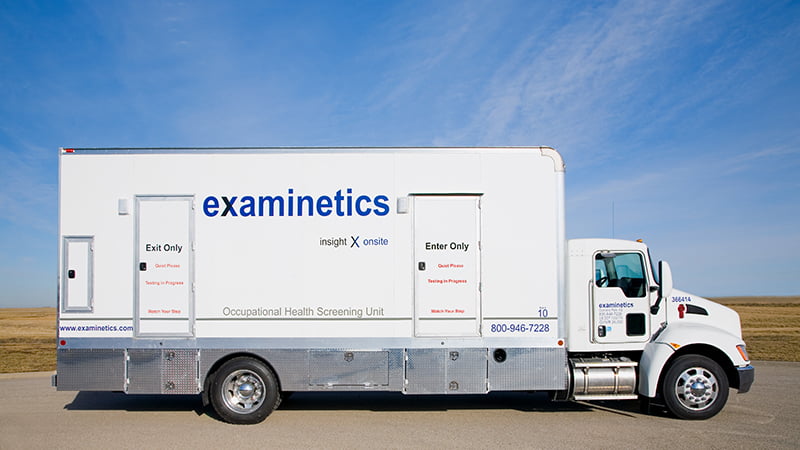Chest X-Rays and B Read
Our X-ray services and access to NIOSH-approved B Readers provide the occupational health and compliance services you need. We can come direct to your job site or service your employees through a near-site clinic in our network.
Examinetics offers onsite X-ray services and access to NIOSH-approved B Readers

Our digital x-ray services support companies with various medical surveillance and compliance needs:
- Silica
- Asbestos
- Arsenic
- Beryllium
- Cadmium
Chest X-rays enable you to identify subtle signs of an impending disease process in the early stages, often long before the employee would experience symptoms. This enables those employees to be removed from the hazardous exposure before the condition progresses to a serious, or potentially fatal, condition.
B Read
We can help meet specific employer screening and surveillance requests for OSHA, MSHA and other regulatory standards that require B Read.
What You Need to Know About B-Read
B Reads examine x-rays of the lungs to look for signs of pneumoconiosis, a lung disease commonly called “Black Lung”.
What is pneumoconiosis?
Pneumoconiosis is a disease which settles in the lungs caused by the inhalation of dust and is most often associated with occupational lung disease. It develops over long periods of time, making it difficult to identify until significant and irreversible damage is already done. Regular chest x-rays, paired with a comprehensive medical history and exam, are the key to life-saving early identification.
Typical symptoms include:
- Difficulty breathing
- Shortness of breath
- Persistent cough, often producing phlegm
- Tightness in the chest
Keep in mind, the reason for medical surveillance is early detection, long before symptoms are present. As such, once your employee has symptoms, it may already be too late. Chest x-rays help us to act before people become symptomatic.

What is B Read? Why do you need it?
In 1949, the International Labor Office (ILO) endorsed standards for describing and recording radiographic appearances of abnormalities caused by the inhalation of dusts. The purpose of the standards was to create uniformity in assessing pneumoconiosis across readers. NIOSH later concluded that a proficiency program was needed to provide a group of qualified readers. The NIOSH B Reader Program began in 1974 and continues today to identify radiologists, pulmonologists, and physicians who have the appropriate skills in classifying x-rays of pneumoconiosis.
B Readers play a critical function in supplying medical surveillance for workers with occupational exposures to respirable mineral dusts such as coal mine dust, asbestos, and crystalline silica. They have the expertise in identifying how pneumoconiosis presents on x-rays.
How does it differ from a regular x-ray?
B Read x-rays are a more sophisticated interpretation of the chest x-ray that may identify exposure and illness caused by substances such as silica and asbestos. The strict guidelines in place for B Read x-rays provides protocols for methodically examining the x-ray in a step-by-step process and recording changes/anomalies on the chest x-ray that can be caused by dust inhalation and fibers.
Exposures that require B Read x-rays:
- Aluminum oxide used in abrasive & refractory materials, ceramics, laboratory-ware, and paper
- Asbestos fibers from insulation or roofing
- Beryllium in settings such as foundry and smelting operations, ceramics manufacturing, and dental lab work
- Cadmium from smelting & refining of metals and manufacturing batteries, plastics, coatings, or solar panels
- Coal dust from mining
- Cobalt from metal mining, work at nuclear facilities, producing/using cutting or grinding tools, or processing cobalt-alloys
- Cotton dust from textile manufacturing
- Silica from sand and rock quarrying
- Talc mining or milling